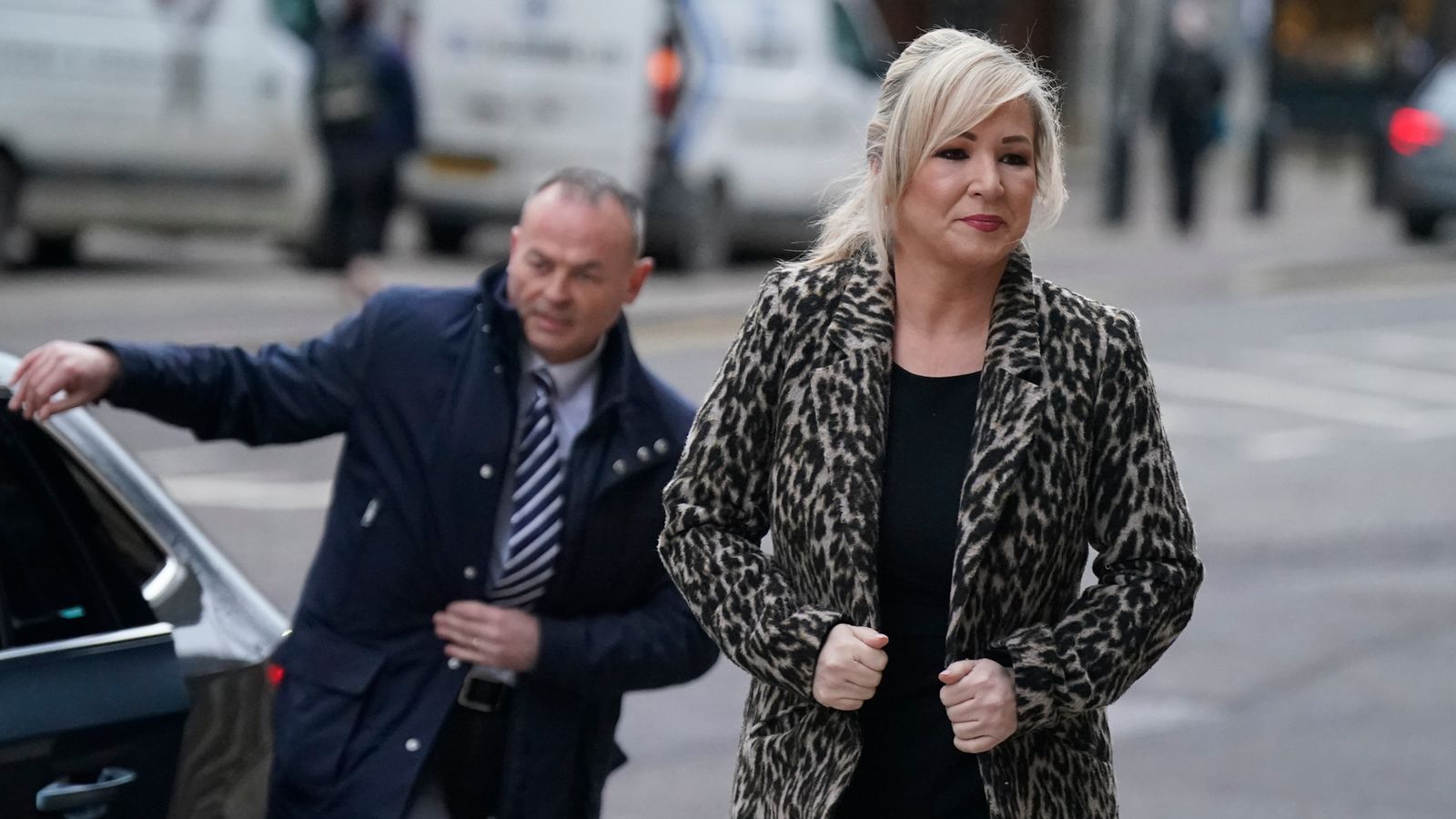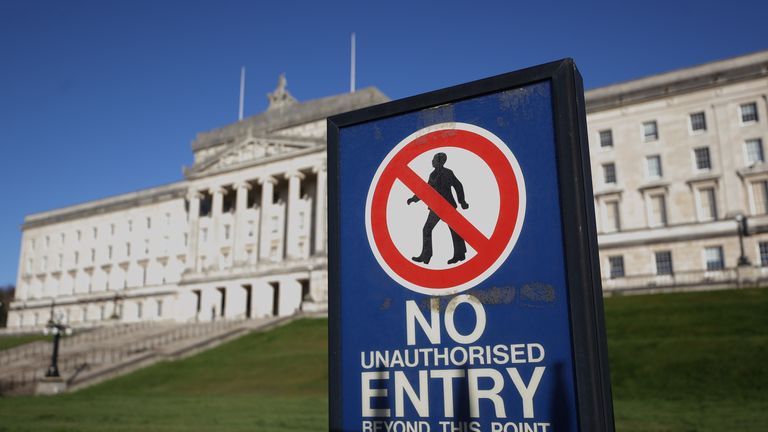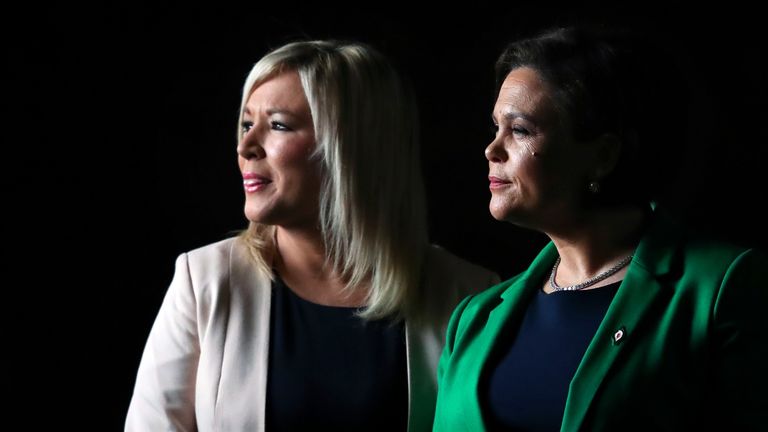It was dubbed “a Protestant parliament for a Protestant people” but 90 years later, there is a Catholic in the office of the first minister.
When Sinn Fein’s Michelle O’Neill accepted the nomination, in the Irish language, a nationalist held the highest title in devolved government for the first time.
The sense of history was palpable at Stormont as members of the Northern Ireland Assembly filed back into the chamber after two years of stalemate.
She won’t have more authority than she had as deputy first minister – the two most senior posts are codependent under power sharing – but it’s hugely symbolic.
Parliament Buildings in the Stormont Estate represent decades of Unionist dominance. There are six floors inside and six pillars outside representing Northern Ireland’s six counties.
But the new first minister represents a party that does not acknowledge those six counties as separate from the 26 counties in the Republic of Ireland.
The Irish words ‘Sinn Fein’ are literally translated as ‘ourselves’ or ‘we ourselves’, expressing a desire for the whole island to be separate from the UK.
The party refuses to take its seats at Westminster but regards power sharing at Stormont as a halfway house on the road to a united Ireland.
The Democratic Unionist Party (DUP), with whom it shares power, views it differently – quick to point out Sinn Fein is “administering British rule” at Stormont.
Nevertheless, the party long described as “the political wing of the IRA” has certainly come a long way since its ‘Smash Stormont’ election campaign in 1982.
Read more:
Why Northern Ireland’s new first minister is hugely symbolic
Angry exchanges at Stormont
It was Ms O’Neill’s predecessor, the former IRA commander Martin McGuinness, who made the transition from guns to government when he became deputy first minister.
But her elevation will boost the party’s hopes of making history in the Republic by having its leader, Mary Lou McDonald, elected taoiseach (prime minister).
The sense of occasion on the hill overlooking Belfast did not prevent angry exchanges, not between power-sharing partners, but between the DUP and hardline Unionists.
The Traditional Unionist Voice party rejects Sir Jeffrey Donaldson’s claim his deal with the UK government removes the Brexit border in the Irish Sea.
But those who campaigned to “take back control” did not appreciate that Brexit might give more control to those seeking to get Irish unity done.


